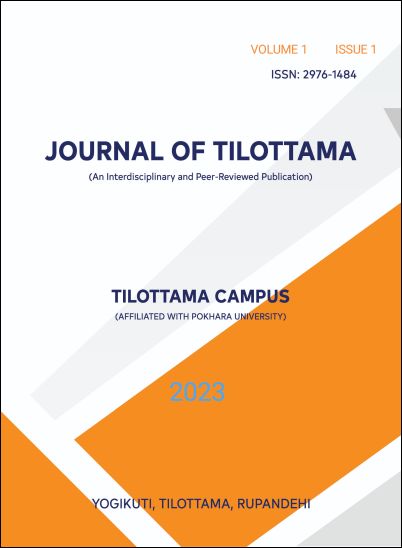Multilingualism in Nepal: Challenges and Opportunities
DOI:
https://doi.org/10.3126/jtilottama.v1i1.64559Keywords:
Multilingualism, Interpretive, Linguistic Diversity, Social Equity, Linguistic RightsAbstract
This paper attempts to examine the challenges and opportunities of multilingualism in Nepal, focusing on interpretive and qualitative perspectives with a particular focus on the role of language policy and planning in promoting linguistic diversity and ensuring language rights. Nepal is a linguistically diverse country with over 123 languages spoken as mother tongues. Despite this linguistic richness, Nepali society faces significant challenges in terms of language use and communication. The findings reveal that multilingualism in Nepal is a complex phenomenon that requires careful attention to linguistic diversity, cultural sensitivity, and social equity. The study offers recommendations and implications for future research on multilingualism, language policy, and planning, and contributes to the understanding of the significance of linguistic diversity in promoting social and cultural integration. It emphasizes the importance of multilingualism in Nepal and calls for more inclusive and participatory approaches to language policy and planning.
Downloads
Downloads
Published
How to Cite
Issue
Section
License
Copyright (c) 2023 Tilottama Campus

This work is licensed under a Creative Commons Attribution-NonCommercial 4.0 International License.
This license enables reusers to distribute, remix, adapt, and build upon the material in any medium or format for noncommercial purposes only, and only so long as attribution is given to the creator.




